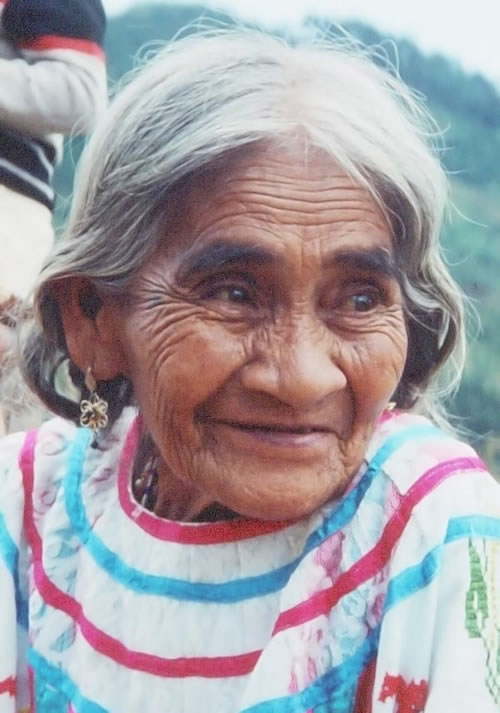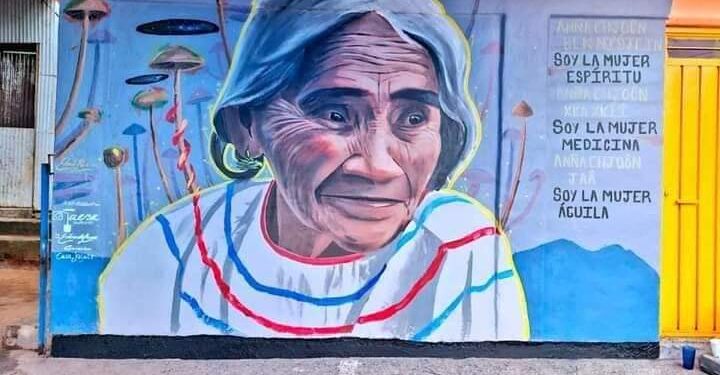María Sabina: the Mazatec healer who spoke with mushrooms
- Who Was María Sabina? A Life Between Tradition, Poverty, and Ancestral Wisdom
- María Sabina’s Early Experiences with Mushrooms
- The "Holy Children": The Use of Hallucinogenic Mushrooms in María Sabina’s Ceremonies
- What Were María Sabina’s Ceremonies Like?
- The Encounter with the West: Robert Gordon Wasson and Psilocybin
- Visits from Iconic Personalities
- Microdosing and the Psychedelic Revival
María Sabina, recognized as the Priestess of the Mushrooms, is one of the most influential figures in the history of shamanism, traditional Mexican medicine, and the global psychedelic renaissance. This Mazatec healer, native to the Sierra of Oaxaca, dedicated her life to ceremonies with hallucinogenic mushrooms — the “holy children” — for healing and spiritual purposes. Her legacy transcended borders, sparking interest among scientists, artists, and spiritual seekers worldwide.
Who Was María Sabina? A Life Between Tradition, Poverty, and Ancestral Wisdom
Born on July 22, 1894, in Huautla de Jiménez, Oaxaca, María Sabina Magdalena García grew up in an indigenous Mazatec family marked by poverty. From a young age, she showed a special sensitivity toward plants and the healing practices of her community. Though she had no formal education and did not speak Spanish, her intuitive wisdom guided her toward curanderismo, a tradition passed down through generations in her family lineage.
Her great-grandfather, grandfather, and father were healers, and though she never knew them, her lineage instilled in her an intuitive interest in medicinal plants and sacred rituals.

The sacred mushroom takes me by the hand and leads me to the world where everything is known. There, the holy mushrooms speak in a certain way, and I can understand them. I ask questions, and they answer.
María Sabina never learned to read or write, but she possessed a deep knowledge of the body, the soul, and the poetic language that flows from visionary trance.
María Sabina’s Early Experiences with Mushrooms
- She first tried them with her sister while tending to animals.
- She felt the mushrooms "spoke" to her and showed her visions.
- Her healing vocation began when the "holy children" revealed how to cure.
María Sabina had her first encounter with mushrooms between the ages of 5 and 7, during a ceremony to heal a sick uncle. Though she did not consume them then, the experience marked her life. Later, while herding animals in the hills with her sister, she found similar mushrooms and decided to try them. The visions she experienced — laughter, tears, and a sense of connection to the divine — awakened in her a profound fascination with these "holy children."
Years later, when her sister fell gravely ill and local healers could not help, María consumed 30 pairs of mushrooms to enter a trance. During this experience, spiritual beings revealed how to heal her sister, solidifying her reputation as a healer.
The "Holy Children": The Use of Hallucinogenic Mushrooms in María Sabina’s Ceremonies
The use of hallucinogenic mushrooms, particularly the species Psilocybe mexicana and Psilocybe caerulescens, was an ancestral practice among the Mazatec people. Known as teonanácatl ("flesh of the gods" in Nahuatl) or "holy children" by María Sabina, these mushrooms contain psilocybin and psilocin, psychoactive compounds that induce altered states of consciousness.
For María, the mushrooms were not a recreational drug but a sacred tool to connect with the spiritual world and heal both body and spirit.

What Were María Sabina’s Ceremonies Like?
- Nighttime ceremonies, preferably under a full moon.
- Religious syncretism: images of saints, candles, Catholic prayers blended with ancestral chants.
- Inner listening guided by mushrooms: the mushroom "spoke" through her.
- Poetic language: María spoke in Mazatec verses that seemed dictated from another dimension.
María Sabina’s ceremonies, known as veladas, took place at night in an atmosphere of reverence. The mushrooms were blessed on an altar with images of Catholic saints, such as the Virgin of Guadalupe and Jesus Christ, reflecting the syncretism between indigenous beliefs and Catholicism.
María and participants would ingest the mushrooms, and she would sing poetic verses in Mazatec that, she claimed, were dictated by the mushrooms themselves. These chants, which described invisible worlds and divine messages, were essential to her practice.
The mushrooms are holy. They taught me the language with which the world speaks.
The Encounter with the West: Robert Gordon Wasson and Psilocybin
In 1955, ethnomycologist Robert Gordon Wasson arrived in Huautla to experience the Mazatec mushrooms. Pressured by local authorities, María Sabina agreed to hold a velada for him. Wasson was fascinated by the ceremony and, in 1957, published the article "Seeking the Magic Mushroom" in Life magazine, which marked the start of global interest in hallucinogenic mushrooms.
This event spurred scientific research into psilocybin — isolated by chemist Albert Hofmann a year later — but also opened the door to psychedelic tourism, bringing unintended consequences for María and her community.
After the publication of R. Gordon Wasson’s influential article, María Sabina’s fame spread internationally. Her ancestral wisdom and mushroom rituals ignited curiosity and a desire for spiritual connection among visitors from distant lands. Numerous accounts and ethnographic studies highlight her influence on notable figures seeking to immerse themselves in the mystery and depth of Mazatec ceremonies.
Visits from Iconic Personalities
Allen Ginsberg, the renowned American poet and writer, was one of the most distinguished visitors. During the 1960s, Ginsberg traveled to Huautla de Jiménez and, as documented in works like The Yage Letters, was deeply moved by the mystical atmosphere and María Sabina’s connection to the divine. Similarly, photographer and ethnobotanist Jean-Pierre Laffite visited the community to visually document these encounters, producing images that captured the ritual essence and cultural syncretism.
Another key figure was anthropologist Timothy Leary, who visited Huautla in 1960 and personally experienced the mushrooms under the healer’s guidance. Leary became a leading advocate for psilocybin’s potential in the West, fueling scientific and cultural debates about altered states of consciousness.
Additionally, numerous accounts and sources allude to the presence — though sometimes anecdotal or framed as urban legends — of personalities like the Beatles, the Rolling Stones, and figures such as Walt Disney, Jim Morrison, Bob Dylan, and Aldous Huxley. While the veracity of some encounters is debated among experts, María Sabina’s fame undeniably became synonymous with a bridge between Mazatec tradition and Western counterculture.
Camilo José Cela and the Theatrical Tribute
María Sabina’s cultural impact extended beyond ceremonies into the arts. The acclaimed Spanish writer Camilo José Cela was so captivated by her story that he inspired the creation of a theatrical work, the Cantata dedicated to her life. With musical direction by Catalan composer Leonardo Balada, this piece premiered on April 17, 1970, at one of the world’s most prestigious venues: New York’s Carnegie Hall.
The work, sponsored by the Hispanic Society of America, blended music, poetry, and ritual to pay homage to María Sabina, celebrating themes like spirituality, connection to nature, and the mystical experience of sacred mushrooms. This artistic tribute helped cement her image as a symbol of fusion between indigenous tradition and modernity.
Microdosing and the Psychedelic Revival
Though María Sabina’s approach was deeply ritualistic and curative, her legacy has also influenced contemporary practices like psilocybin microdosing. Today, researchers and therapists explore the potential of psychoactive mushrooms to treat depression, anxiety, and addiction under scientific protocols.
While microdosing diverges from the original ceremonial context, many acknowledge that María Sabina’s testimony opened the door to understanding psilocybin as a therapeutic tool.
María Sabina’s Modern Legacy
- Clinical studies using psilocybin for depression, addiction, and anxiety.
- Psychedelic-assisted psychotherapy practices.
- Reclamation of indigenous knowledge in books, documentaries, and forums.
- A culture of respect toward sacred plant use.
María Sabina was far more than a healer. She was a visionary woman, a poet of the soul, and a bridge between indigenous spirituality and modern science. Her life invites us to honor sacred practices with respect, to look inward, and to reconnect with ancestral wisdom.
I am a woman who looks inward, I am a star woman, I am a woman of the sky.




















